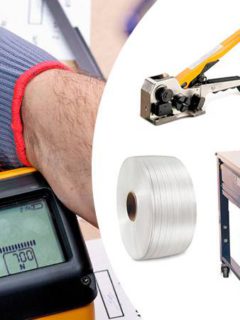Success stories in the world of logistics related to warehouses that have significantly increased their performance by mechanising or automating their processes are becoming increasingly popular in social networks and specialised media.
But if your warehouse is not yet working along these lines, where to start, which solutions to evaluate, test and finally choose?
The purpose of this guide is to help you in your choice, and depending on your business objectives, guide you in discovering the logistics automation and/or mechanisation solutions at your disposal.
Table of contents:
- Step 1: Establish the mechanisation or automation objectives for your warehouse
- Step 2: Evaluate the order picking phases to be optimised
- Step 3: Prioritise the optimisations to be made
- Step 4: Find the appropriate mechanisation or automation solutions
- Step 5: Implement these solutions in the warehouse
Step 1: Set the mechanisation or automation goals for your warehouse
This step is crucial to know why to mechanise or automate order picking.
Think about the goals you want to achieve for your company. Would you like to…
- Increase your order picking rate?
- Reduce the risk of TMS injuries to your operators?
- Optimise your budget by improving the performance of your logistics team?
You can also ask yourself when you want to achieve these goals and what return on investment (ROI) you ultimately expect.
Step 2: Evaluate the order picking phases to be optimised
Based on the objectives defined in step 1, identify the stages where mechanisation or automation will add value. It can add value to your warehouse logistics, from the point of view of the productivity/profitability of your business and/or the well-being of your operators.
And of course, it is not about investing at all costs and all at once in very expensive technologies. In most cases, the change will be made gradually
Here are examples of how to make this change step by step:
- In the storage phase you can reduce injuries to warehouse operators due to moving heavy loads, or save time in time-consuming storage processes.
- In the picking phase you can consider shortening picking routes that are too long or optimising the flow of your operators.
- At thepacking stage it is possible to reduce the time spent on the preparation of each package, especially if time-consuming preparation requires real precision, or to avoid injury to your operators.
Write down a list of possible logistics optimisations and proceed to the next step.
Step 3: Prioritise the optimisations to be made
Now that you are clear about your objectives and the different phases, determine which optimisations are more or less urgent/necessary for your warehouse. Prioritise the actions according to:
- The results you can achieve in terms of productivity
- The budget to be allocated;
- The estimated time to implement these optimisations.
For each optimisation, you can assign each of these criteria a score ranging from 0 (low productivity, high budget, long implementation time) to 5 (higher productivity, low budget, short implementation time).
Once you have your table created, do the sum of the 3 columns, and the optimisation with the highest score will be the priority to implement.
Thanks to this system, you now have a realistic and structured project in front of you , based on the ROI you can get from it.
Only after this step will you be able to ask yourself if you need to mechanise or automate any order picking stations. How to do it? Let’s address it in the next step.
Step 4: Find the right mechanisation or automation solutions
do you have in mind the order picking phases you want to mechanise or automate? Great, now we will know which of the various automation or mechanisation solutions are best suited to your logistical challenges.
what solutions are available for mechanising your warehouse?
“Mechanisation is the first step towards investing in a more productive and efficient warehouse ” Antonio Reyes, Logistics Director of Rajapack Spain.
Although it is a process that requires a great deal of organisation, the mechanisation of a warehouse requires less planning and restructuring of your warehouse than automation, since automating a process requires a thorough rethinking of its flow, design, routines of the warehouse team…
Among the simple ways of gaining productivity through mechanisation, we will often think of investing in machines that:
- Facilitate the transport of loads: Pallet trucks for the storage phase, specialised transport trolleys for picking.
- Fill your boxes: Paper filling machines for environmentally friendly filling, air filling systems for fast filling and foam filling systems for safe filling.
- Protect your goods safely: Machines that wrap pallets with film (robot film wrappers, stretch wrappers with manual brake or motorised pre-stretch), machines that seal your boxes with adhesive tape (single- and multi-format case sealers) and machines that strap your products (automatic, semi-automatic or manual).
- Close your packages: thanks to strapping machines or case sealing machines
what solutions are available to automate your warehouse?
Automating a warehouse will generally require more thought and will break many of the current processes in a logistics warehouse.
With a large initial investment it is possible to automate all order picking, however, often the choice is made to focus on one of the two areas that benefit most from automation:
- The storage and picking area.
- The order picking area.
Let’s take a look at the solutions available to automate each of these areas.
how to automate the storage and picking area?
For this first key area, solutions that bring the product to the operator are increasingly chosen among the advanced options offered to logistics managers.
The stacker crane in narrow aisles
In aisles as short as 1.5 m in length, a stacker crane moves to the intended locations. The stacker crane is equipped with a gondola that positions it in front of the box of the product to be picked for the order, or the product to be stored.
Thanks to the cable lift in a narrow aisle, we reduce the picking effort.
The advantages of this technology:
- A large space saving, as we can reorganise the entire picking part in 1.5 m aisles.
- A strong reduction in the risk of order errors.
- An increase in productivity because it is the lift that will determine the best route for grouping the orders to be prepared.
The points to watch out for with this technology:
- The lift is not fast. With a maximum speed of approximately 7 km/h, the picking or storage speed is constant, but limited.
- As with any automated solution, it is necessary to take out maintenance insurance that includes very rapid intervention in the event of an incident.
- In addition, working at heights requires reinforced safety rules for order pickers.
The picking carousel
With the picking carousel, you set up a huge metal rack containing hundreds of locations on shelves. In the case of a vertical picking carousel, you simply scan the product and the rack sends it to the operator, who only has to associate it with the order he is preparing. It is a system particularly suitable for small products.
The picking effort is therefore reduced, even if the product routing phase to the picker is not optimised.
The advantages of this technology:
- Better productivity because the operator waits for the products to be presented to him.
- Reduction of accidents in the warehouse compared to classic picking movements.
- A strong reduction in the risk of error with the order.
The points to watch out for with this technology:
Make sure you have a maintenance insurance that intervenes quickly and effectively in the event of a breakdown.
The automatic rail system
With this system, rails move a tray that passes through different areas often corresponding to different types of products. In each area, a picker fills the tray with products. When the tray corresponding to an order is finished, it is sent to the dispatch area. The system is particularly suitable if most of your orders contain more than one product.
With this technology, picking and the transport phase to the dispatch area are optimised.
The advantages of this technology:
- An increase in productivity, the pickers have a restricted area for picking the products.
- Considerable time savings, because the tray performs most of the movements automatically.
- A strong reduction of the risk of error with the order.
The points to watch out for with this technology:
- Once again, make sure you have a maintenance insurance that ensures a quick solution to incidents, if necessary.
Beyond the automation of the storage and picking phases…
In addition to these three automation technologies, there are many automated racking systems that are optimally adapted to pallets and crates. Connected to a specific Warehouse Management System (WMS), they allow you to automate the racking and monitor the status of your stock at any time.
The Pick-by-Voice system can also help you optimise the flow of your operators through a WMS.
However, keep in mind that for all automated technologies that send a WMS, you have to make sure you choose it according to your needs.
Indeed, a dynamic WMS assigns, at this moment, a product to a location. The rules may vary slightly depending on the rotation speed of a product, but in general, the smarter your WMS is, the more it will assign products to locations based on optimised lanes. It is, for example, particularly effective associated with a carousel picking. Therefore, it is a system to fit well into your logistics warehouse strategy.
That said, let’s take a look at the solutions available for automating your picking and packing stations.
how to automate the logistics of the packaging area?
Systems with automatic case sealers allow you to close the final package automatically – you can prepare up to 1200 cases/hour!
For a quotation on this system you can contact our machine and system experts on 900 877 025 (free phone) or get in touch with us by email: grandes-cuentas@rajapack.es
do you already know which automation or mechanisation technology is the most suitable for your warehouse?
Step 5: Implement these solutions in your warehouse
Now you can implement the various solutions you have chosen.
But pay attention: the mechanisation or automation of your warehouse will change many tools and processes in your daily logistics.
The inclusion of technology in your workspace will require a change in your warehouse team. And like any change management project, it will include:
- Training your operators on these new tools and new security rules.
- Communicate with warehouse operators: Change can cause pushback, so gather your staff regularly to allow them to share their experience with the new tools.
When implementing new solutions, don’t try to get an ROI too quickly. Generally, achieving a return on investment on an automation system takes 3 to 5 years. An adaptation time is necessary to keep your teams motivated and to gain productivity in your warehouse.
Summary: How to automate or mechanise your orders
- Plan your automation or mechanisation project with the right objectives in mind, taking into account the productivity of your warehouse and the well-being of your warehouse operators.
- Take mechanisation or automation as a gradual process: Target the order picking phases where the technology will bring real added value, and then deploy it in other, less significant, segments.
- Choose the technology that really matches your business objectives, evaluating the benefits to your warehouse. If you are on a tight budget, mechanise. Automation is more encompassing but more costly.
- Conduct the deployment of this new equipment as a change management project, preparing operators gradually. The goal: continue to value their work, while explaining the benefits of these technologies for them and for the warehouse.
If you need a quote for your logistics department, do not hesitate to contact us, our experts will help you by email:grandes-cuentas@rajapack.esor on our free phone number: 900 877 025














